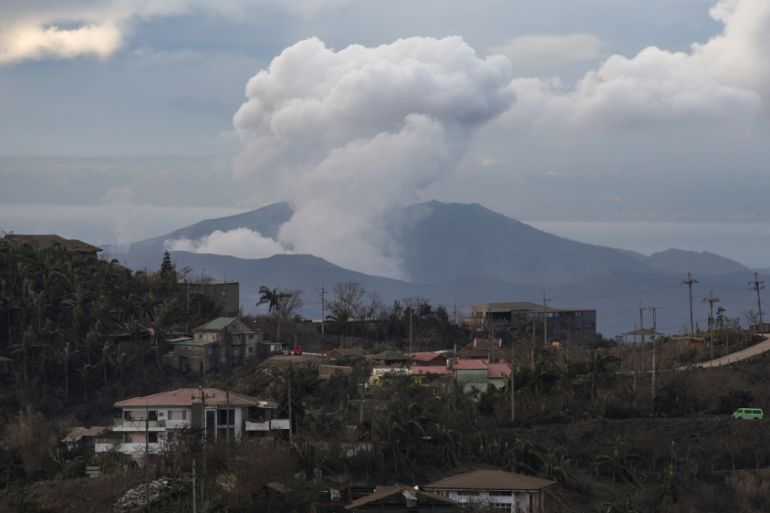Threat of ‘explosive eruption’ at Taal stalks Filipino evacuees
Number of displaced residents rises to 162,000 as experts say steady steam emission and tremors indicate rising magma.

The number of residents displaced by an erupting volcano in the northern Philippines has risen to 162,000, as state scientists continue to warn that the threat of a hazardous explosive eruption remained, despite an apparent lull in activity on the surface.
The number of evacuees rose as police stepped up patrols to clear towns located within a 14km (8.69 mile) radius danger zone around Taal volcano in Batangas province, 66km (41 miles) south of Manila.
Keep reading
list of 3 itemsIn Pictures: Taal volcano spews lava, sends ash clouds into sky
Philippines on alert as volcano spews ash, steam and lava
Among those displaced were about 5,000 people who live on Volcano Island – a popular tourist destination renowned for its stunning view of the volcano’s crater lake and lush hills teeming with trees and birds.
The Philippine Institute of Volcanology and Seismology (Phivolcs) said on Saturday that “steady steam emission and infrequent weak explosions” were monitored in the past 24 hours at Taal volcano, which is located in the middle of a lake.
The explosions generated “white to dirty white ash plumes 50 metres to 600 metres tall,” it added.
|
|
Phivolcs chief Renato Solidum said continuing earthquakes were also monitored at Taal volcano, indicating that magma was continuing to rise to the top.
“What we see on the surface is different from what is happening underneath,” Solidum told a press conference.
“We still see magma rising and that can result in more dangerous activity of the volcano.”
“Alert level four remains because there is still threat of a hazardous explosive eruption,” he added.
Phivolcs earlier reported more signs of unrest at the volcano, including a new fissure on the slope of the volcano, the widening of road cracks in nearby towns, and receding shoreline around Taal Lake.
Taal volcano, the second-most active volcano in the Philippines, has erupted 33 times since 1572. Its last eruption was in October 1977, but it showed signs of unrest between 2008 and 2011, as well as in 2019.
The Southeast Asian archipelago lies in the Pacific “Ring of Fire,” the string of faults around the ocean basin where much of the world’s earthquakes and volcanic eruptions occur.